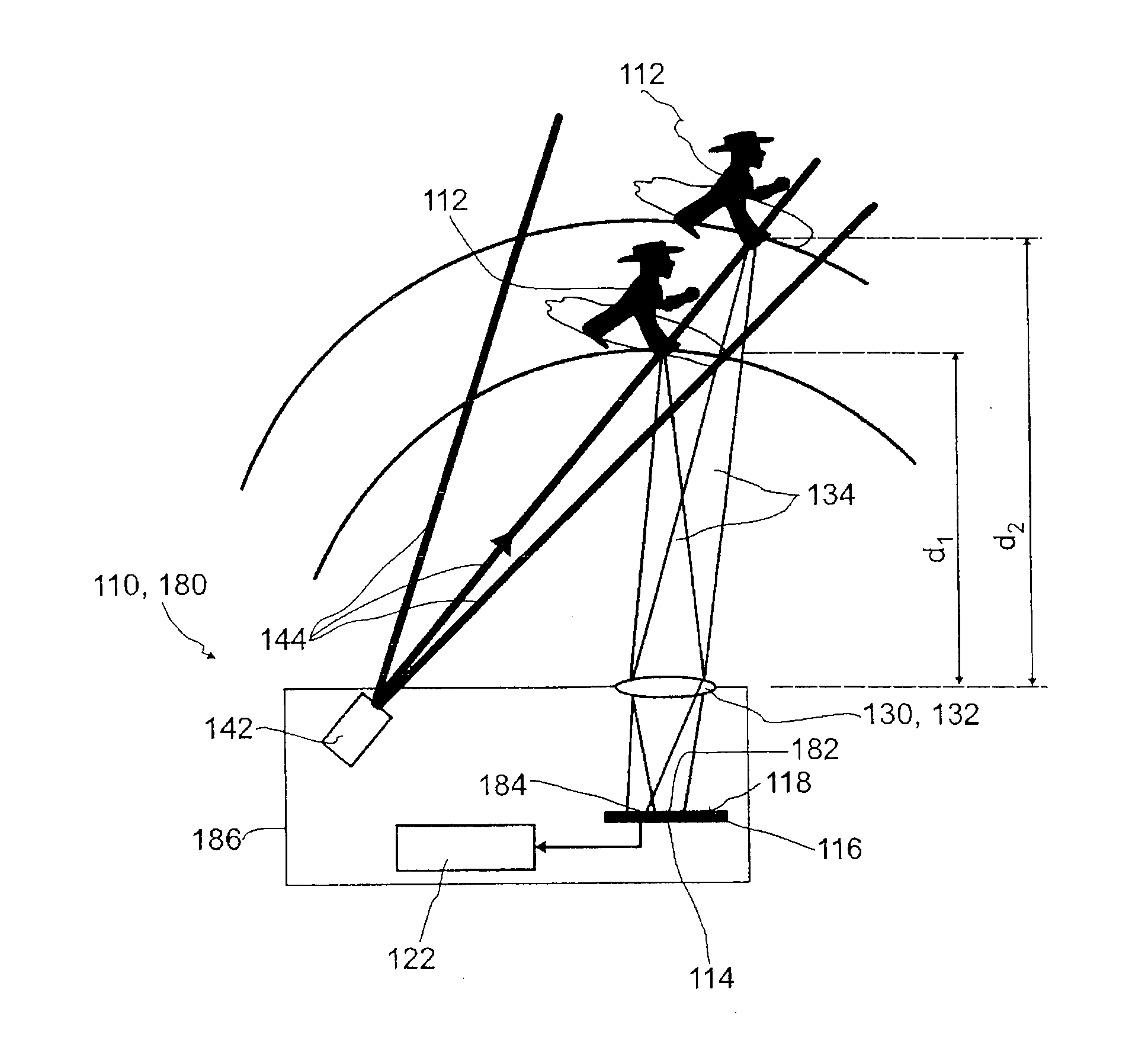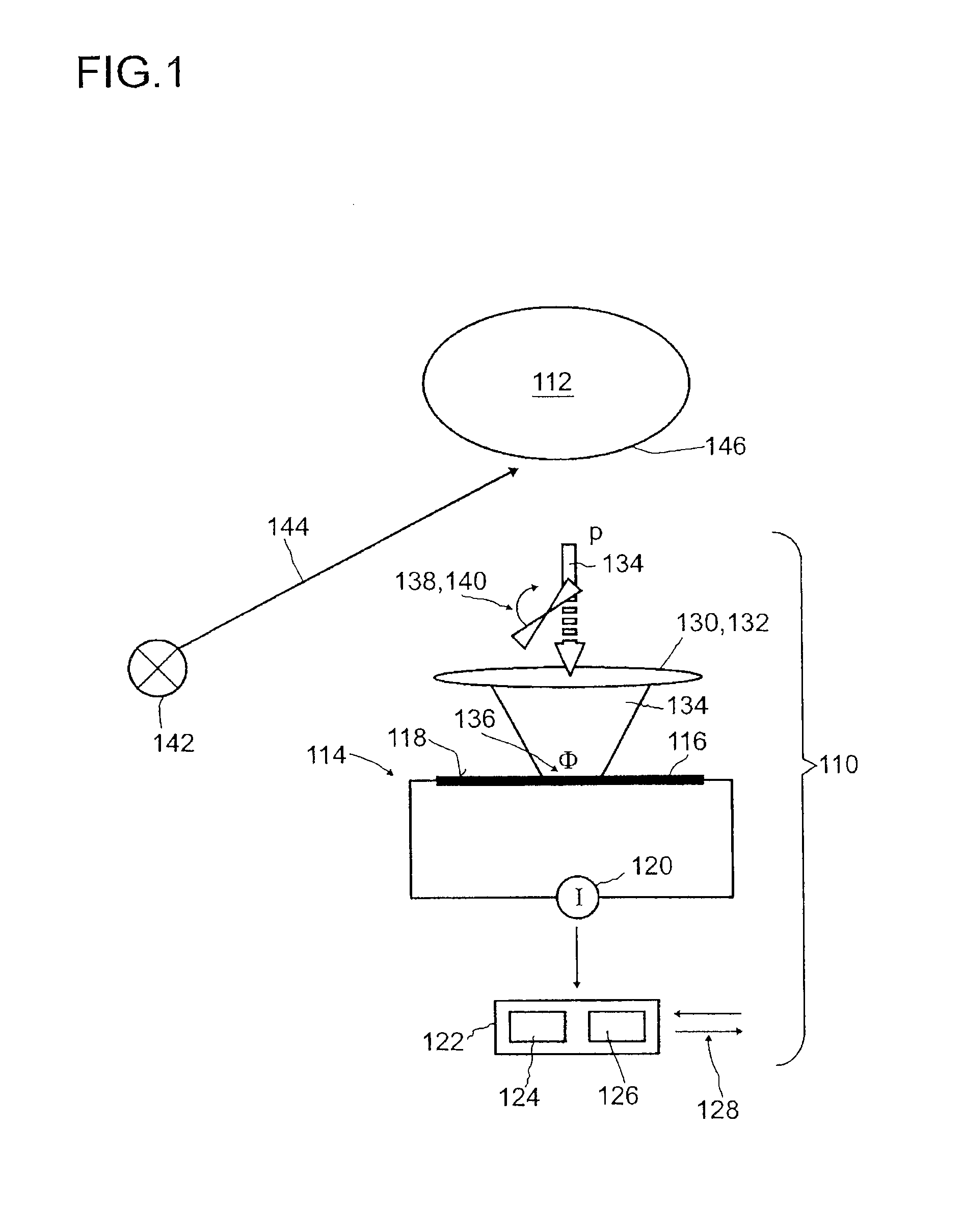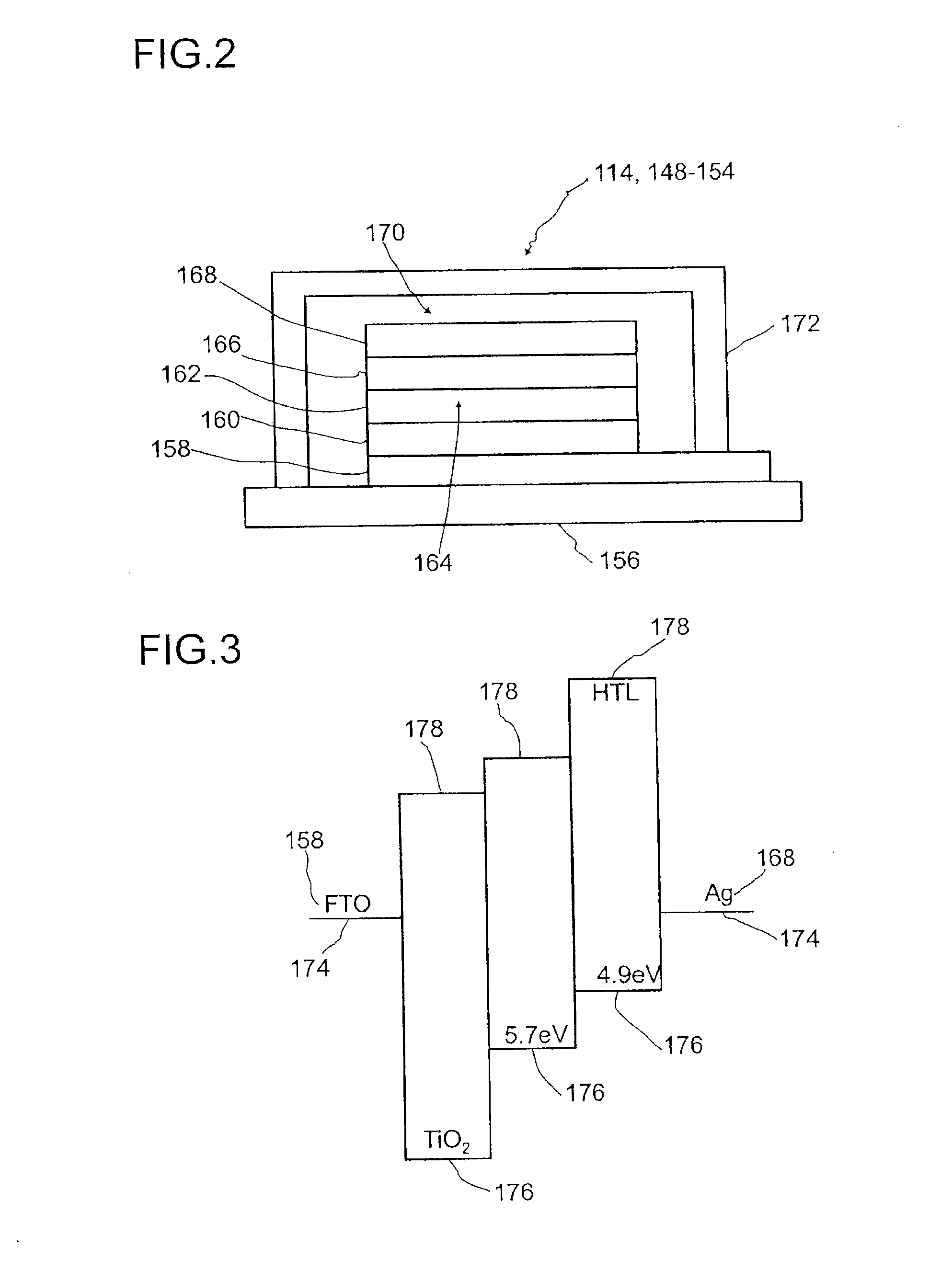Detector for optically detecting at least one object
a technology of optical detection and detector, applied in the direction of instruments, final product manufacturing, sustainable manufacturing/processing, etc., to achieve the effect of enhancing the efficiency of components and reducing the contact of n-semiconducting metal oxid
- Summary
- Abstract
- Description
- Claims
- Application Information
AI Technical Summary
Benefits of technology
Problems solved by technology
Method used
Image
Examples
synthesis examples
[0237]Syntheses of various compounds which can be used in dye solar cells 154 in the context of the present invention, in particular as p-type semiconductors 166, are listed by way of example hereinafter. Possible syntheses of compounds of the formula (I) are described, for example:
(A) General Synthesis Schemes for Preparation of Compounds of the Formula I
(a) Synthesis Route I:
(a 1) Synthesis Step I-R1:
[0238]
[0239]The synthesis in synthesis step I-R1 was based on the references cited below:[0240]a) Liu, Yunqi; Ma, Hong; Jen, Alex K-Y.; CHCOFS; Chem. Commun.; 24; 1998; 2747-2748,[0241]b) Goodson, Felix E.; Hauck, Sheila; Hartwig, John F.; J. Am. Chem. Soc.; 121; 33; 1999; 7527-7539,[0242]c) Shen, Jiun Yi; Lee, Chung Ying; Huang, Tai-Hsiang; Lin, Jiann T.; Tao, Yu-Tai; Chien, Chin-Hsiung; Tsai, Chiitang; J. Mater. Chem.; 15; 25; 2005; 2455-2463,[0243]d) Huang, Ping-Hsin; Shen, Jiun-Yi; Pu, Shin-Chien; Wen, Yuh-Sheng; Lin, Jiann T.; Chou, Pi-Tai; Yeh, Ming-Chang P.; J. Mater. Chem.; 16...
synthesis example 1
(B) Synthesis Example 1
Synthesis of the Compound ID367 (Synthesis Route I)
(B1): Synthesis Step According to General Synthesis Scheme I-R1:
[0265]
[0266]A mixture of 4,4′-dibromobiphenyl (93.6 g; 300 mmol), 4-methoxyaniline (133 g; 1.08 mol), Pd(dppf)Cl2 (Pd(1,1′-bis(diphenylphosphino)ferrocene)Cl2; 21.93 g; 30 mmol) and t-BuONa (sodium tert-butoxide; 109.06 g; 1.136 mol) in toluene (1500 ml) was stirred under a nitrogen atmosphere at 110° C. for 24 hours. After cooling, the mixture was diluted with diethyl ether and filtered through a Celite® pad (from Carl Roth). The filter bed was washed with 1500 ml each of ethyl acetate, methanol and methylene chloride. The product was obtained as a light brown solid (36 g; yield: 30%).
[0267]1H NMR (400 MHz, DMSO): δ 7.81 (s, 2H), 7.34-7.32 (m, 4H), 6.99-6.97 (m, 4H), 6.90-6.88 (m, 4H), 6.81-6.79 (m, 4H), 3.64 (s, 6H).
(B2): Synthesis Step According to General Synthesis Scheme I-R2:
[0268]
[0269]Nitrogen was passed for a period of 10 minutes through ...
synthesis example 2
(C) Synthesis Example 2
Synthesis of the Compound ID447 (Synthesis Route II)
(C1) Synthesis Step According to General Synthesis Scheme II-R2:
[0274]
[0275]p-Anisidine (5.7 g, 46.1 mmol), t-BuONa (5.5 g, 57.7 mol) and P(t-Bu)3 (0.62 ml, 0.31 mmol) were added to a solution of the product from synthesis step I-R2 (17.7 g, 38.4 mmol) in toluene (150 ml). After nitrogen had been passed through the reaction mixture for 20 minutes, Pd2(dba)3 (0.35 g, 0.38 mmol) was added. The resulting reaction mixture was left to stir under a nitrogen atmosphere at room temperature for 16 hours. Subsequently, it was diluted with ethyl acetate and filtered through Celite®. The filtrate was washed twice with 150 ml each of water and saturated sodium chloride solution. After the organic phase had been dried over Na2SO4 and the solvent had been removed, a black solid was obtained. This solid was purified by column chromatography (eluent: 0-25% ethyl acetate / hexane). This afforded an orange solid (14 g, yield: 75%...
PUM
 Login to View More
Login to View More Abstract
Description
Claims
Application Information
 Login to View More
Login to View More - R&D
- Intellectual Property
- Life Sciences
- Materials
- Tech Scout
- Unparalleled Data Quality
- Higher Quality Content
- 60% Fewer Hallucinations
Browse by: Latest US Patents, China's latest patents, Technical Efficacy Thesaurus, Application Domain, Technology Topic, Popular Technical Reports.
© 2025 PatSnap. All rights reserved.Legal|Privacy policy|Modern Slavery Act Transparency Statement|Sitemap|About US| Contact US: help@patsnap.com



